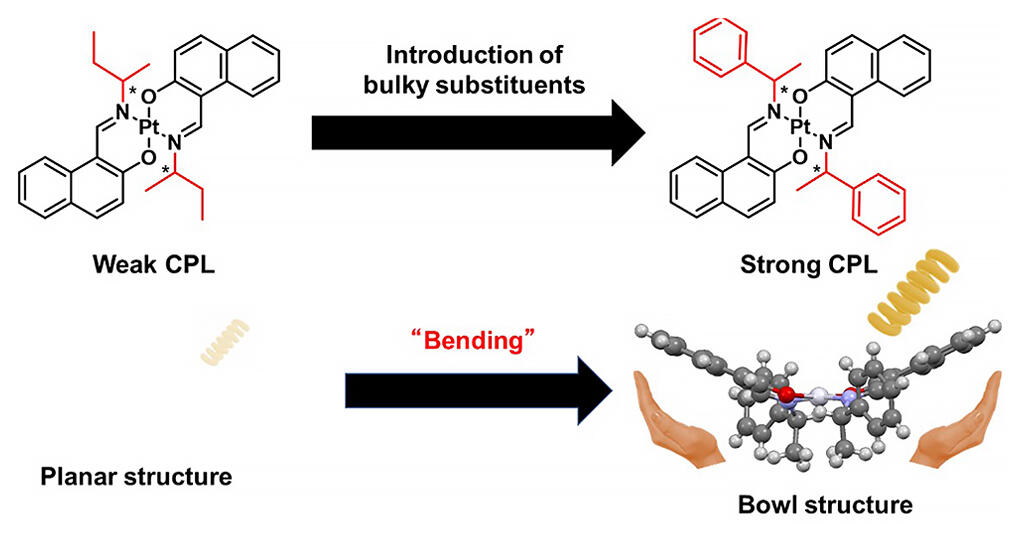A research group led by Assistant Professor Masahiro Ikeshita and Professor Takashi Tsuno of the Department of Applied Molecular Chemistry, College of Industrial Science and Technology, Nihon University, and Associate Professor Yoshitane Imai of the Department of Applied Chemistry, Faculty of Science and Engineering, Kindai University, has successfully developed a bowl-shaped platinum complex that exhibits strong circularly polarized luminescence (CPL).

Provided by Nihon University
CPL is a phenomenon in which a molecule emits excessive light biased toward either right or left polarization and is expected to be applied to next-generation optical information technologies such as three-dimensional displays and optical cryptographic communications. However, it is still unclear as to the shape of molecule that provides strong CPL, and rational design guidelines for molecules that emit a more efficient CPL are needed.
The research group designed and synthesized compounds in which chiral substituents were introduced into the molecular framework of platinum complexes that exhibit phosphorescence and examined their CPL properties.
Analysis of the molecular structure of the synthesized complexes revealed that the complexes with chiral alkyl substituents had a planar molecular structure, whereas those that had bulkier cyclic substituents had a "distorted" molecular structure in the form of a bowl. They also examined the CPL properties of each complex and found that the planar complex exhibited only a weak CPL that could not be detected, while the bowl-shaped complex exhibited a strong CPL.
"The results of this research provide an important guideline for the design of molecules that exhibit CPL, which we expect will be applied in the future to display materials for smartphones, televisions and other products that are familiar to us all," says Dr. Ikeshita.
■ Circularly polarized luminescence (CPL): Light is an electromagnetic wave, and when the direction of its oscillation faces a certain direction, it is known as being polarized. Polarized light is divided into linear polarization, in which the direction of oscillation is in a single direction, and circular polarization, in which it rotates in a circular motion over time. When a chiral luminescent material is excited with light, it may exhibit luminescence in which the ratio of circularly polarized light rotating to the left or to the right is biased. This is called circularly polarized luminescence.
This article has been translated by JST with permission from The Science News Ltd.(https://sci-news.co.jp/). Unauthorized reproduction of the article and photographs is prohibited.




